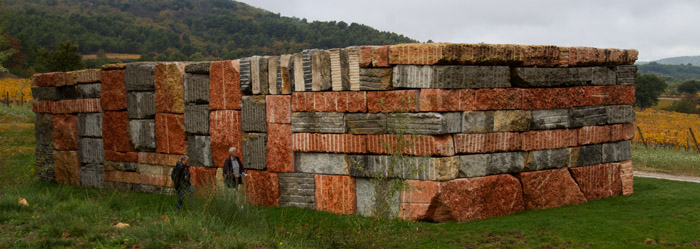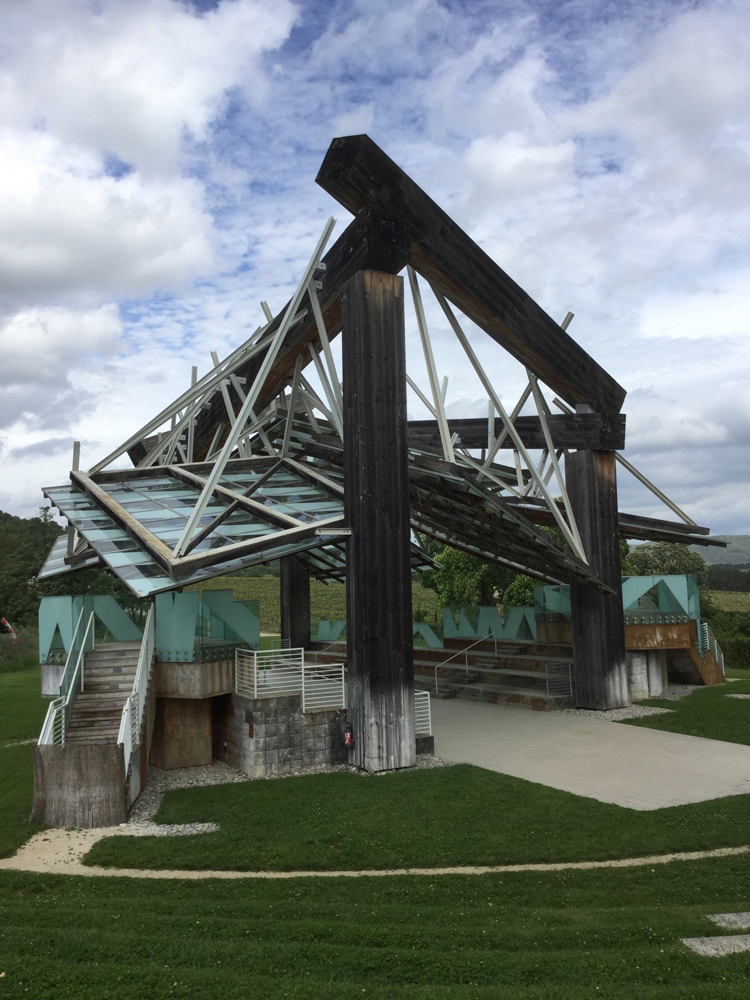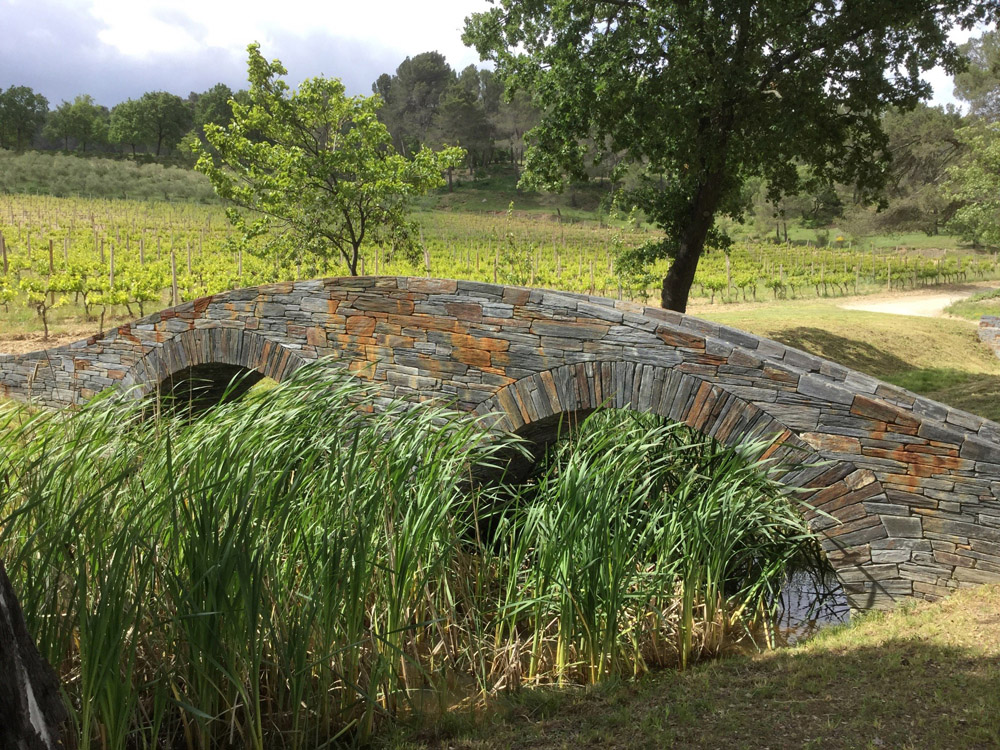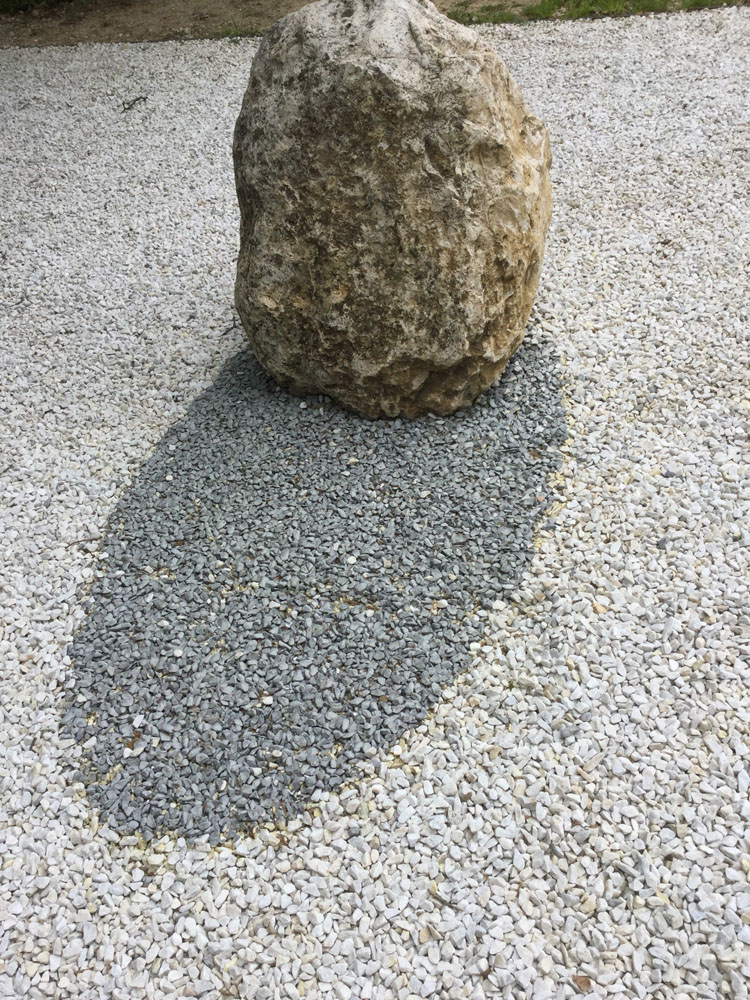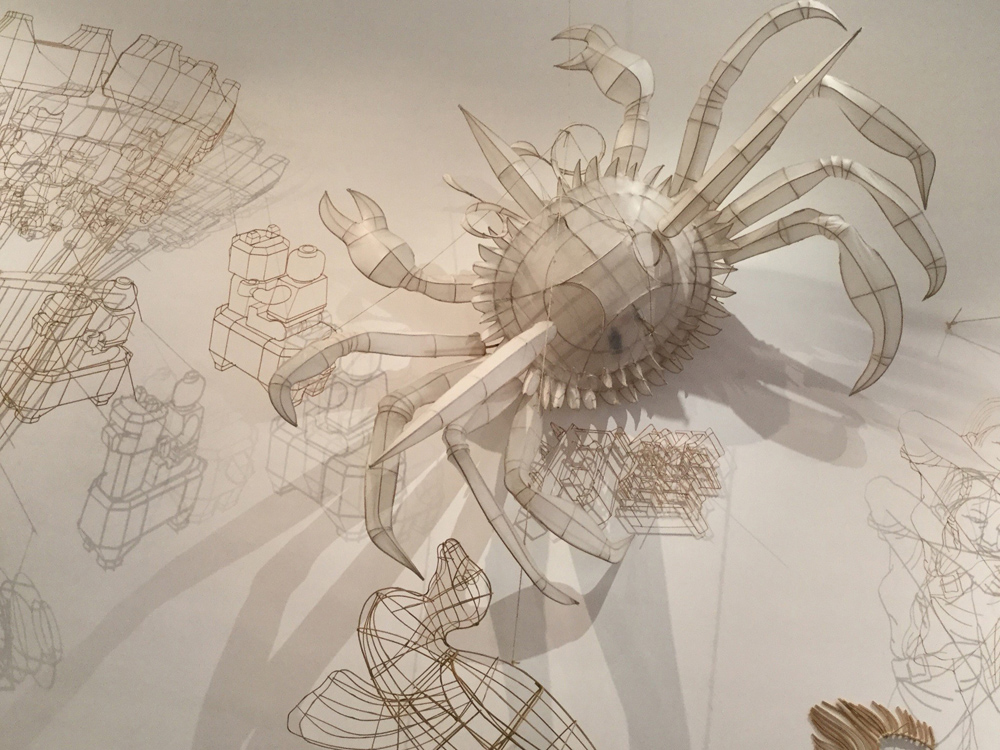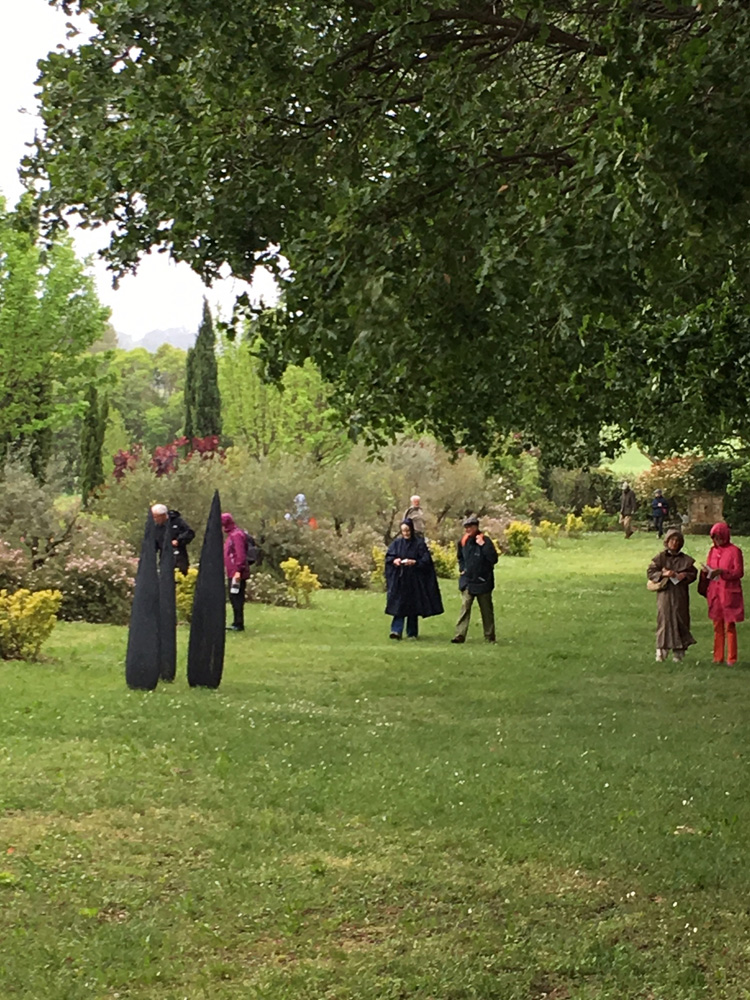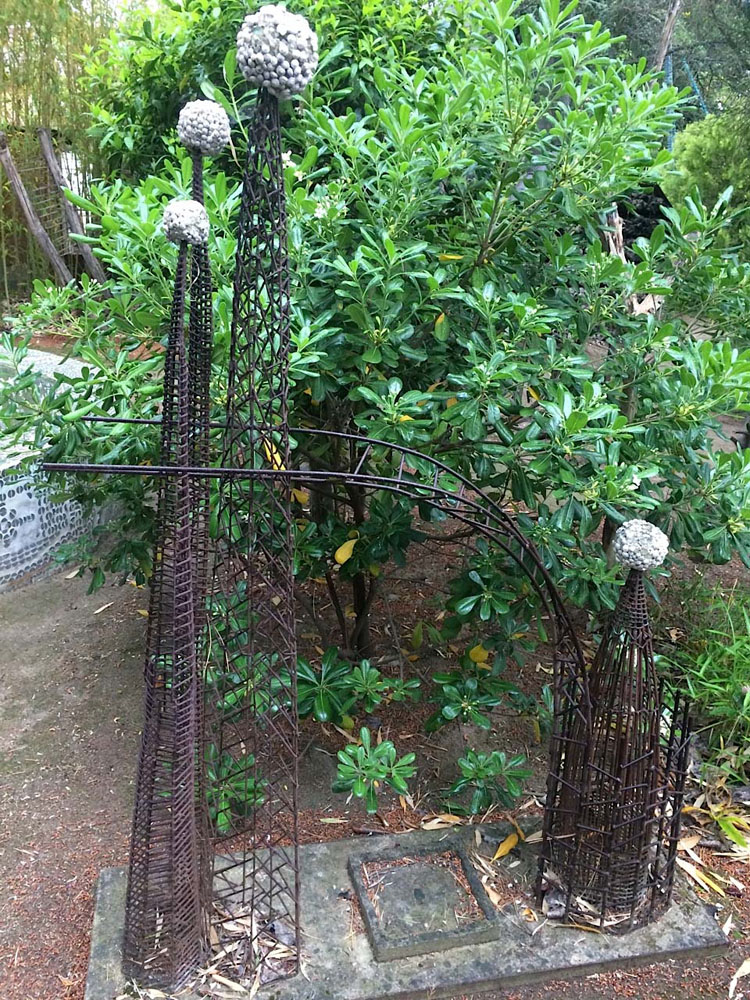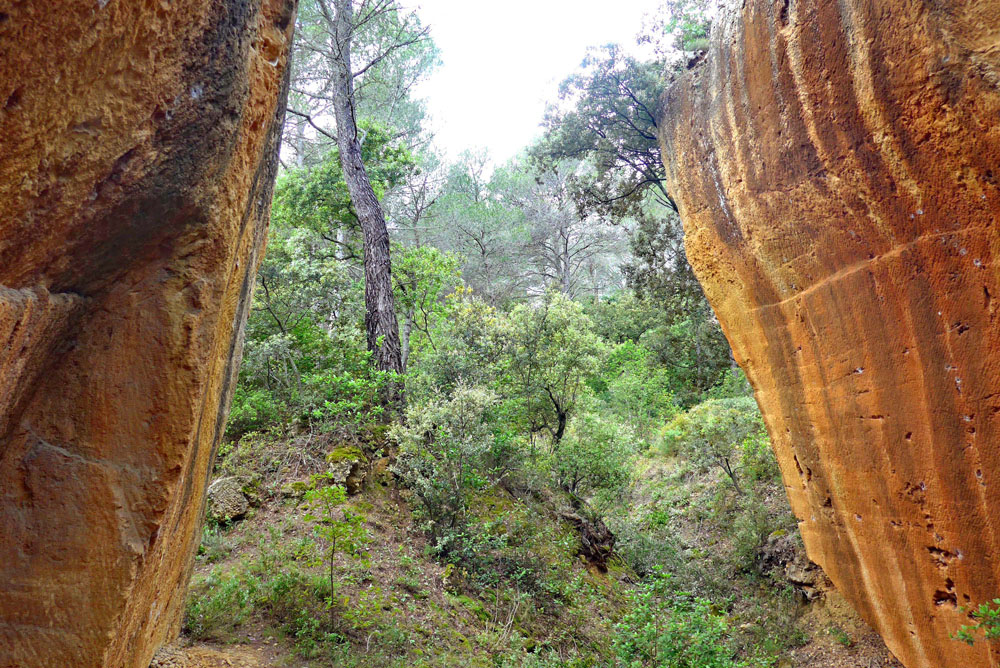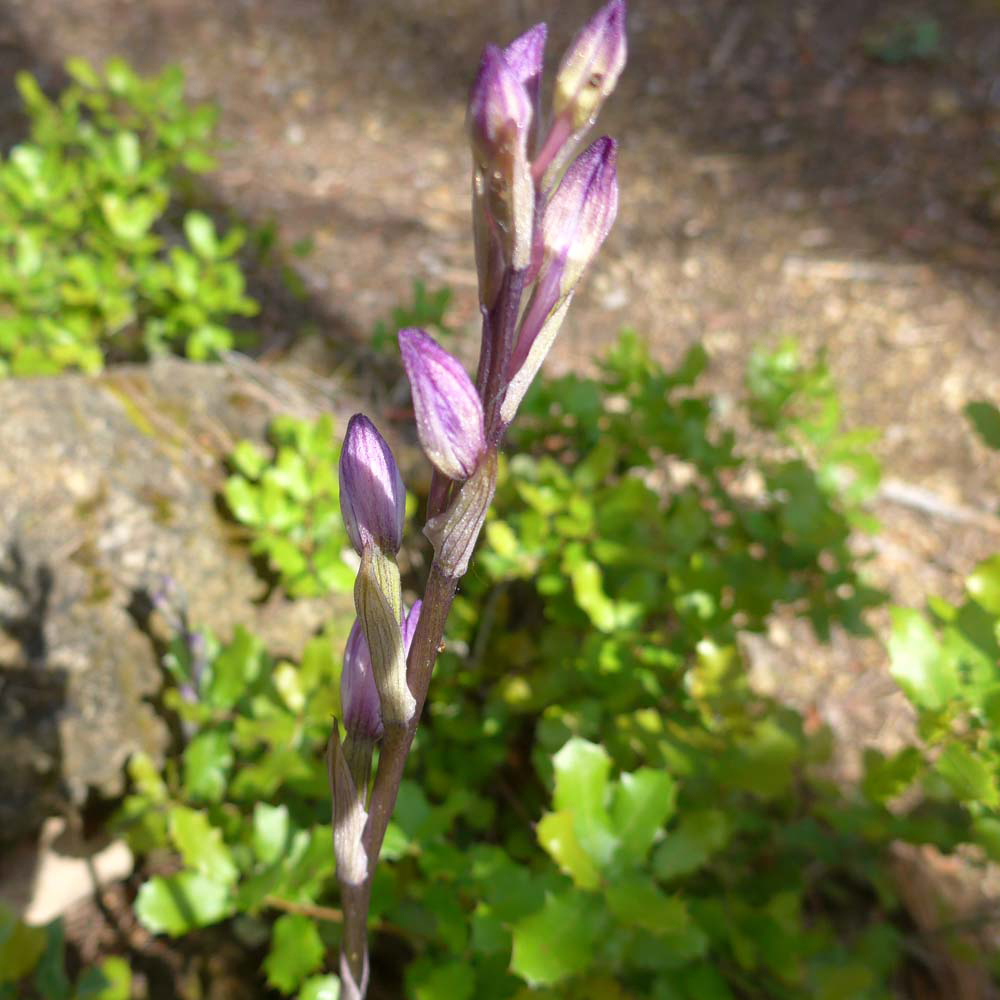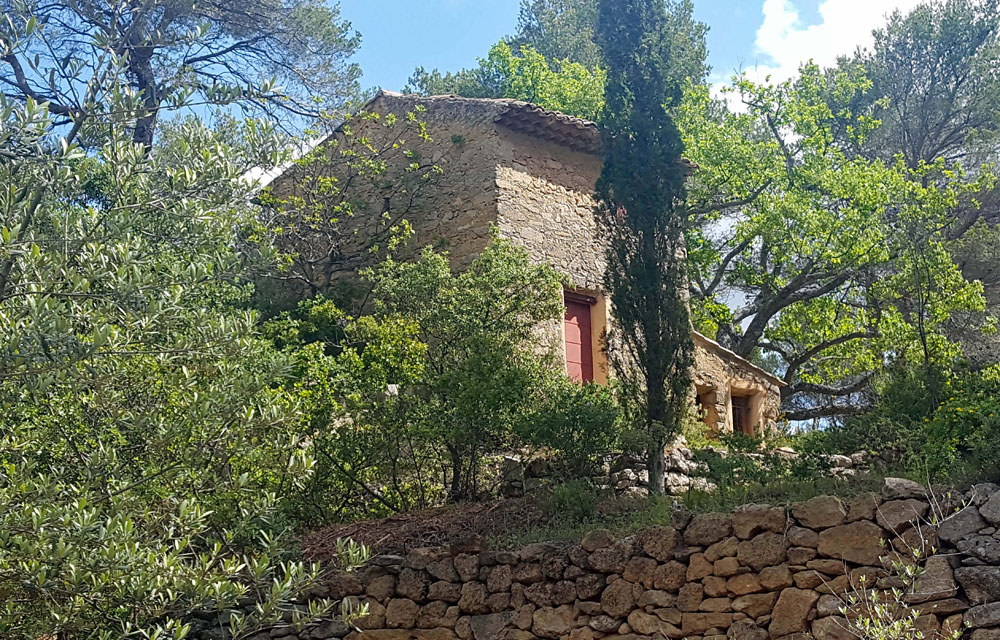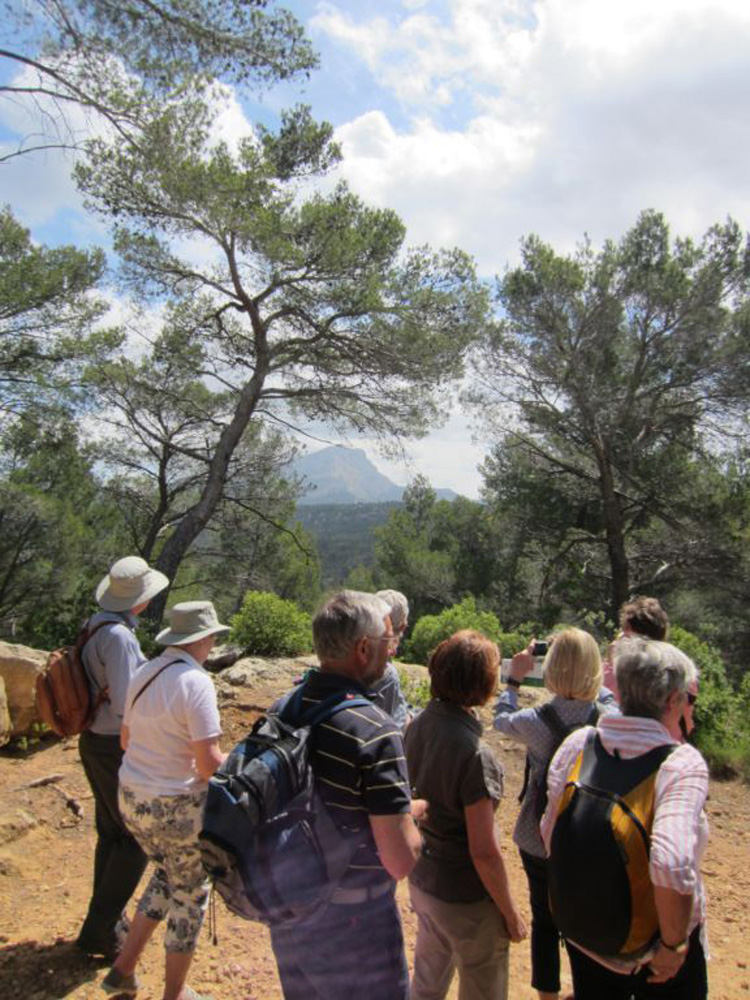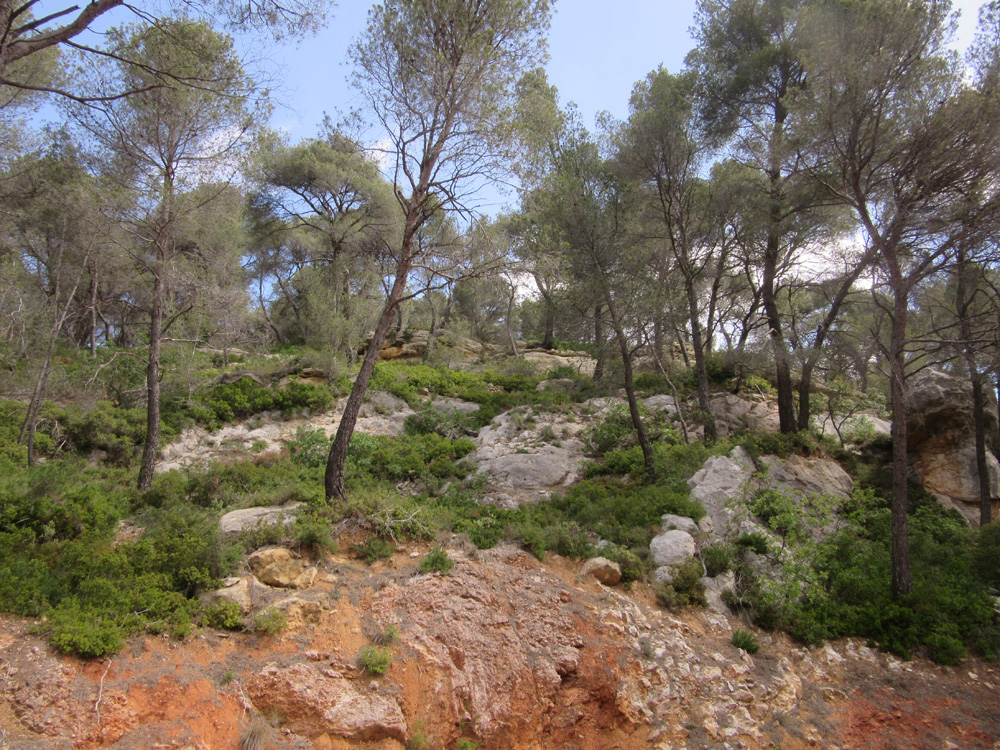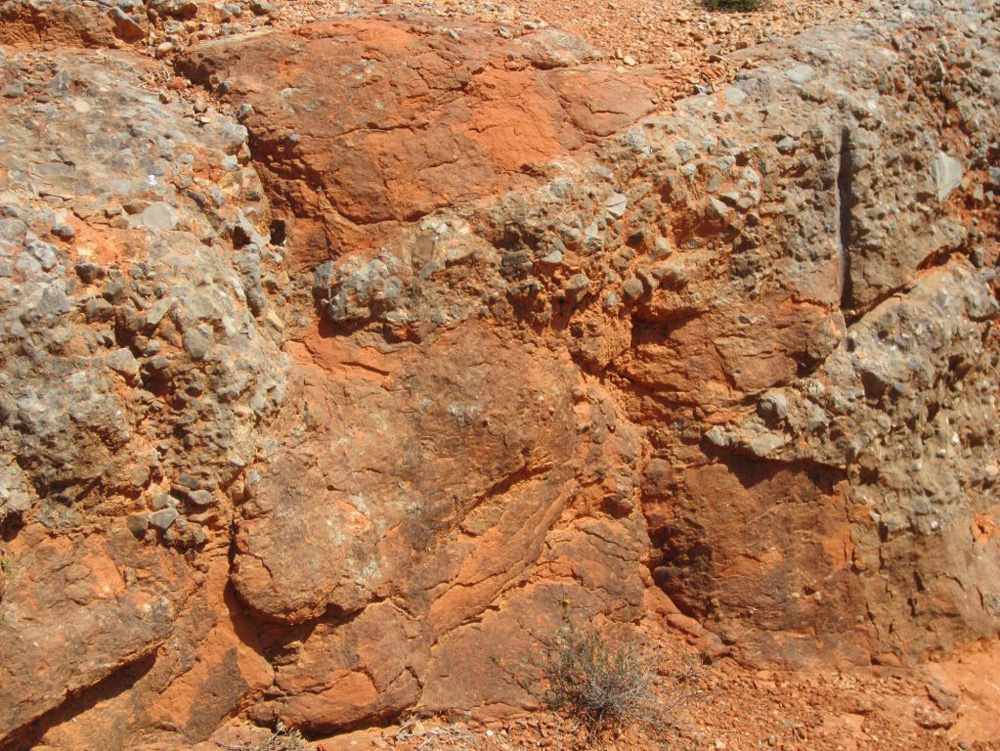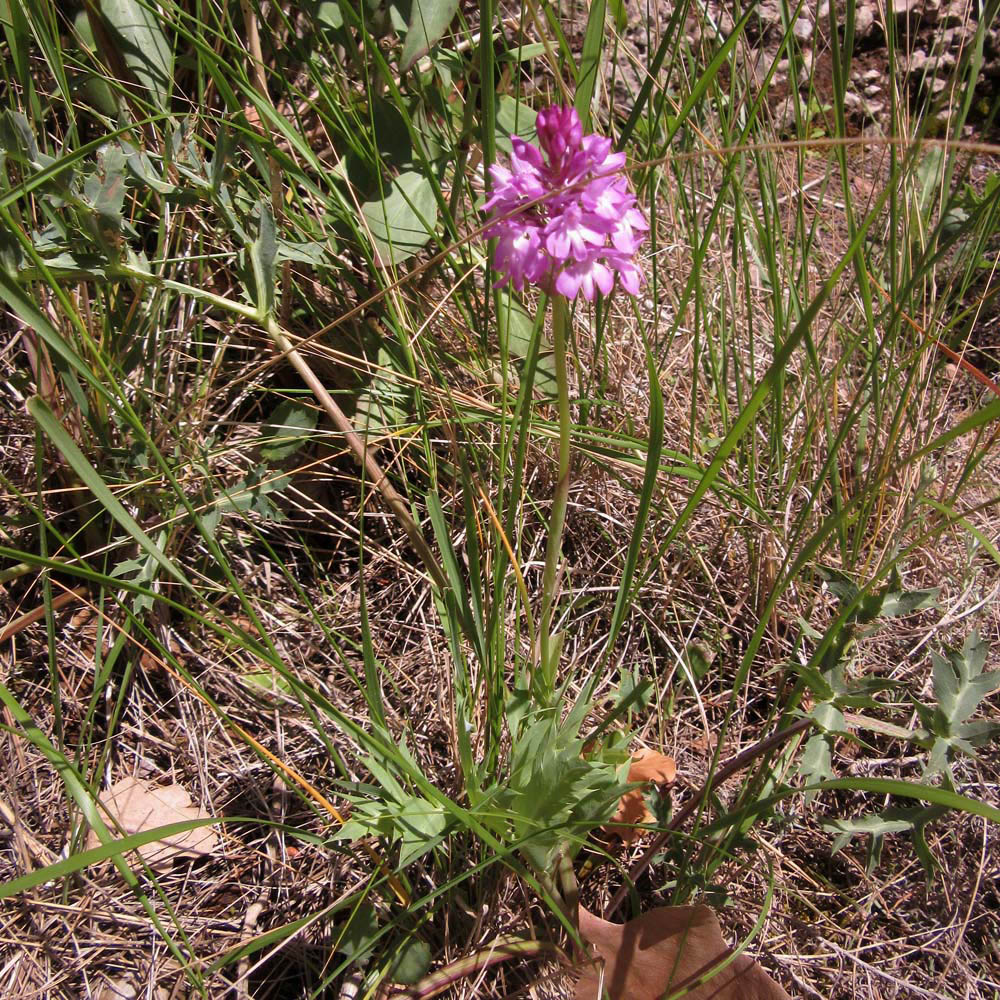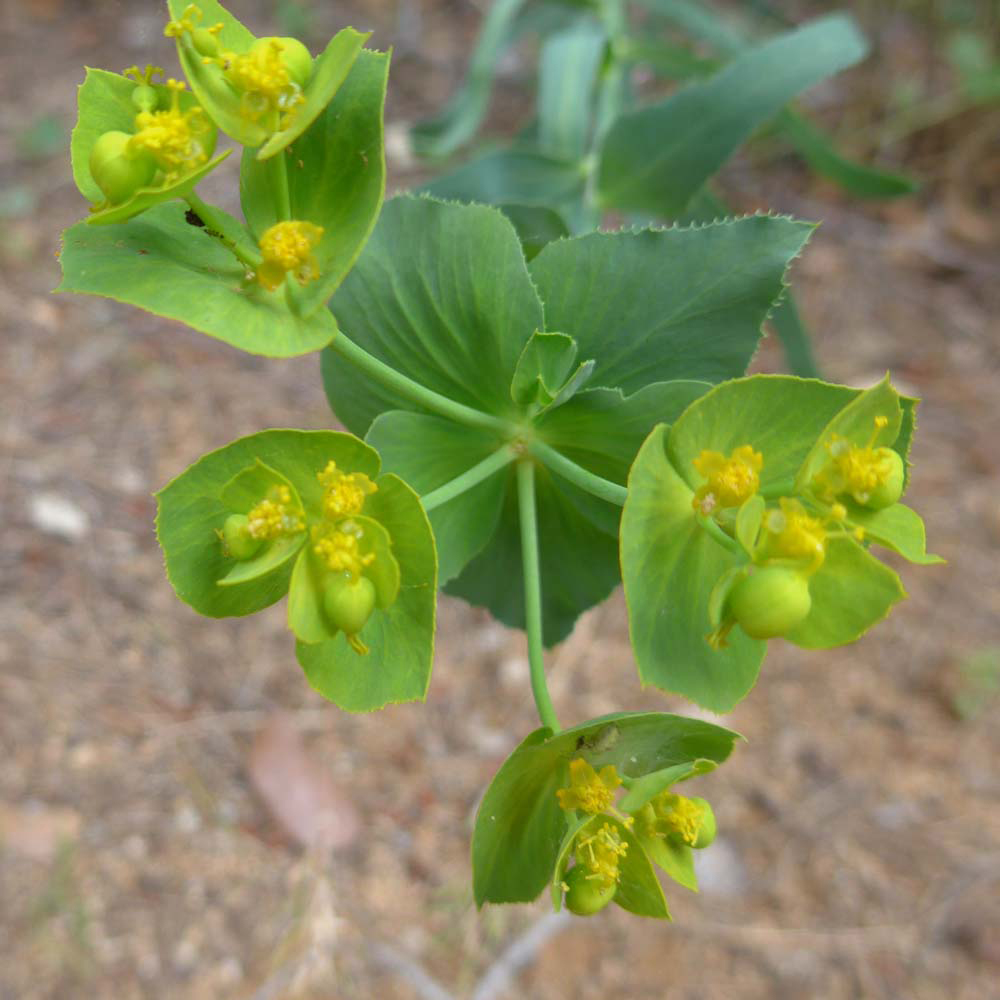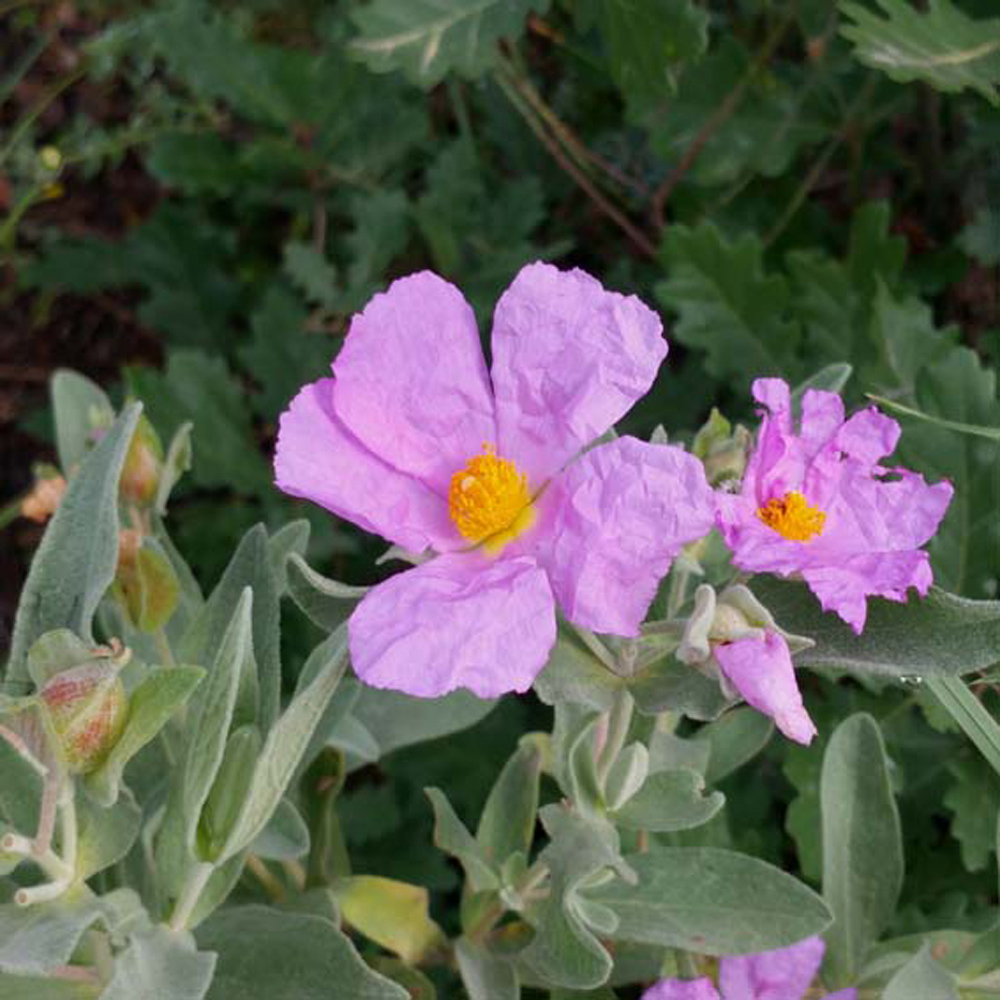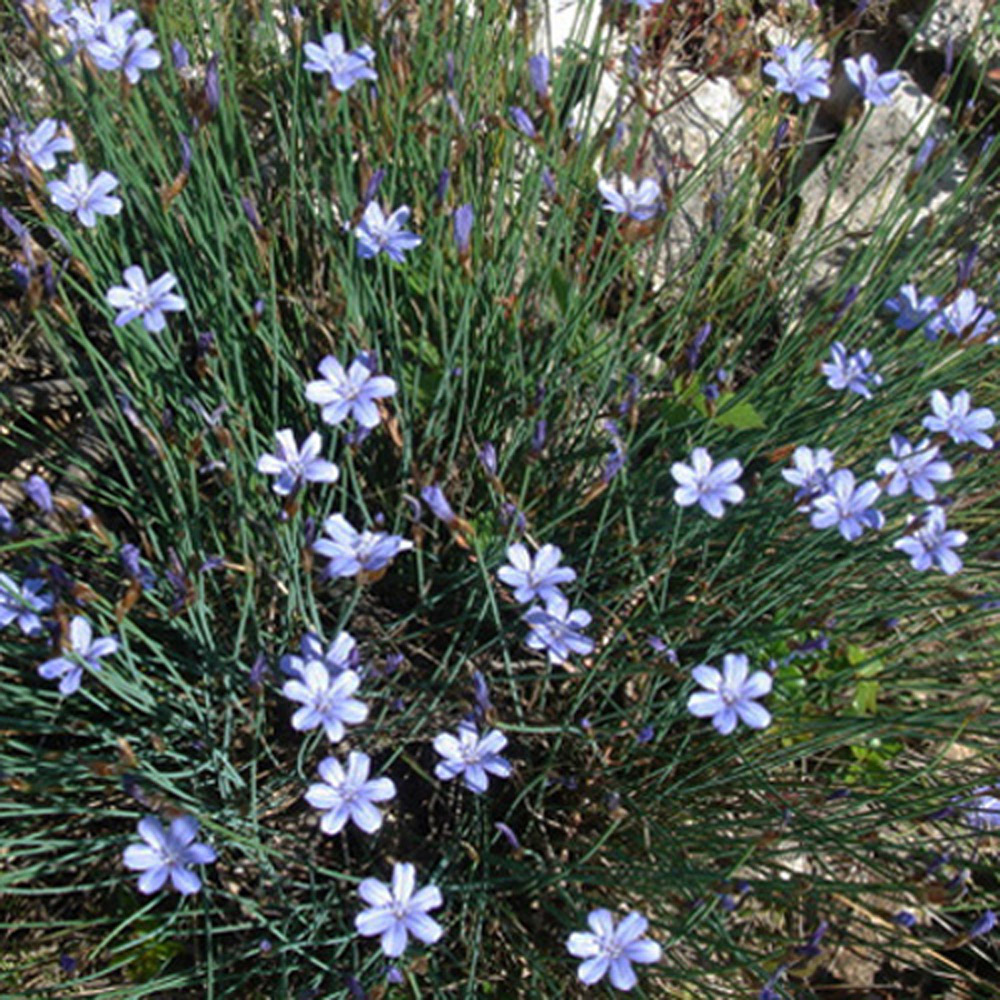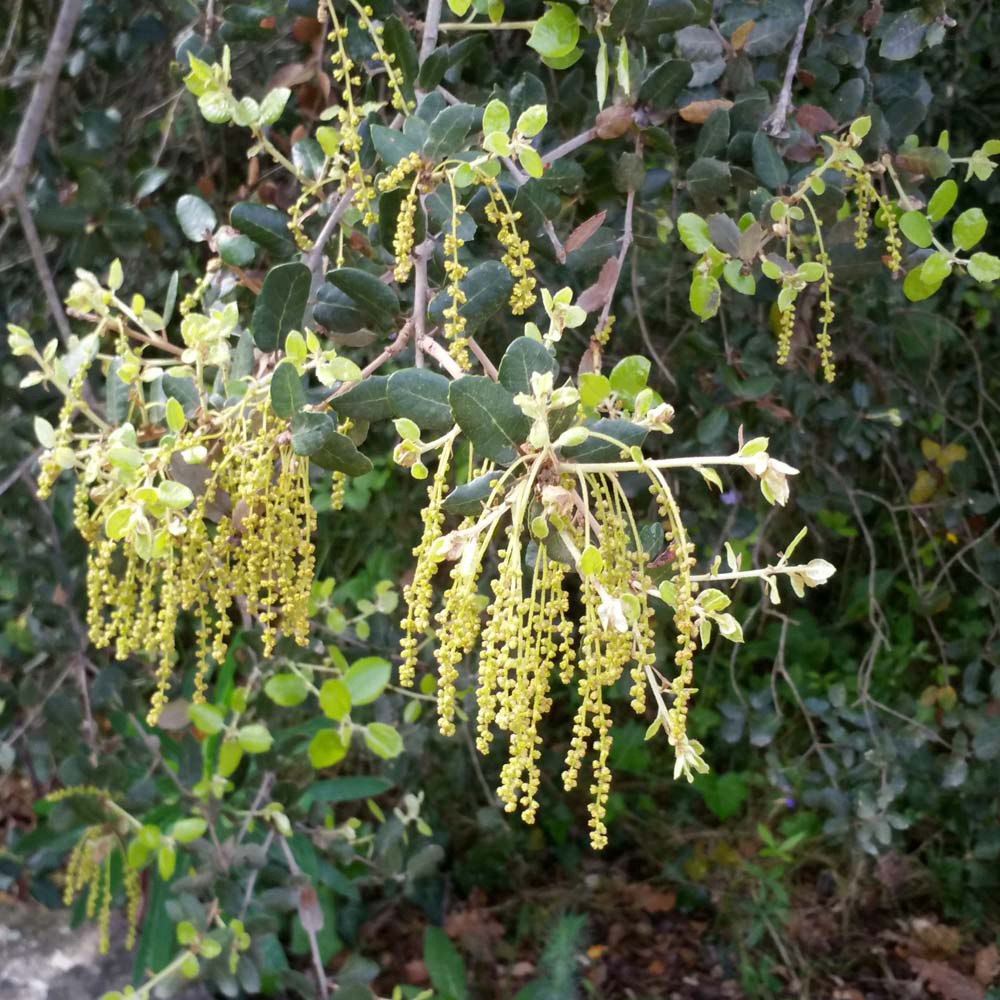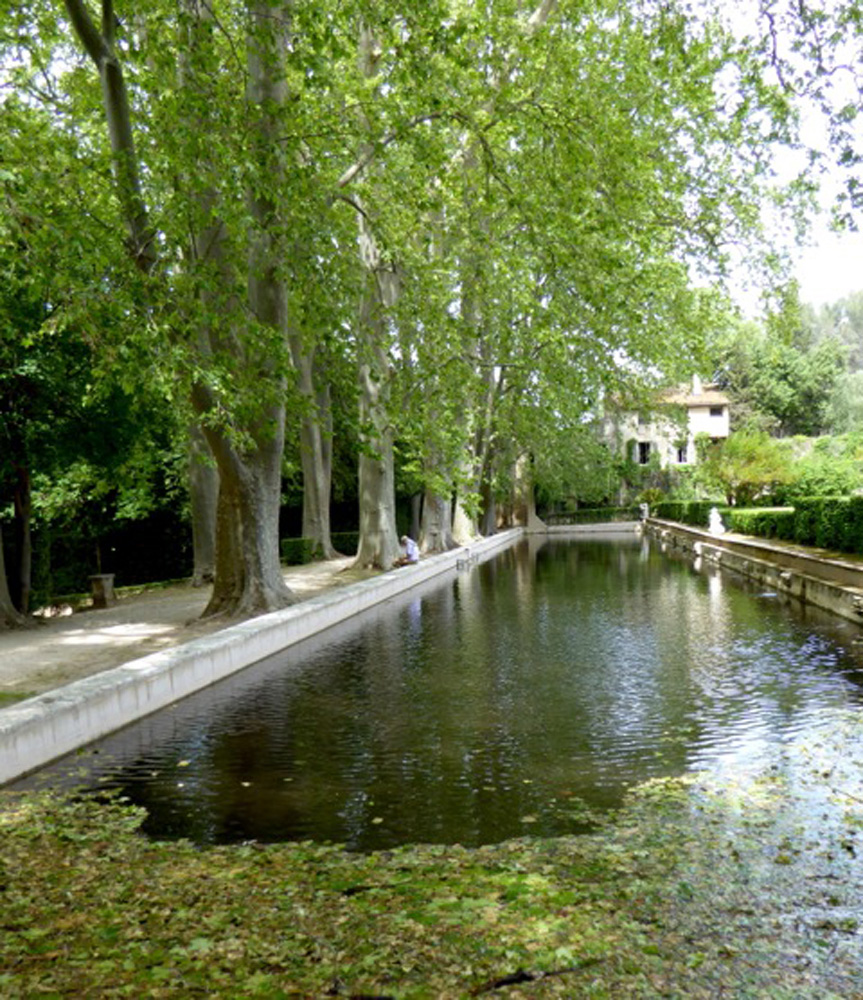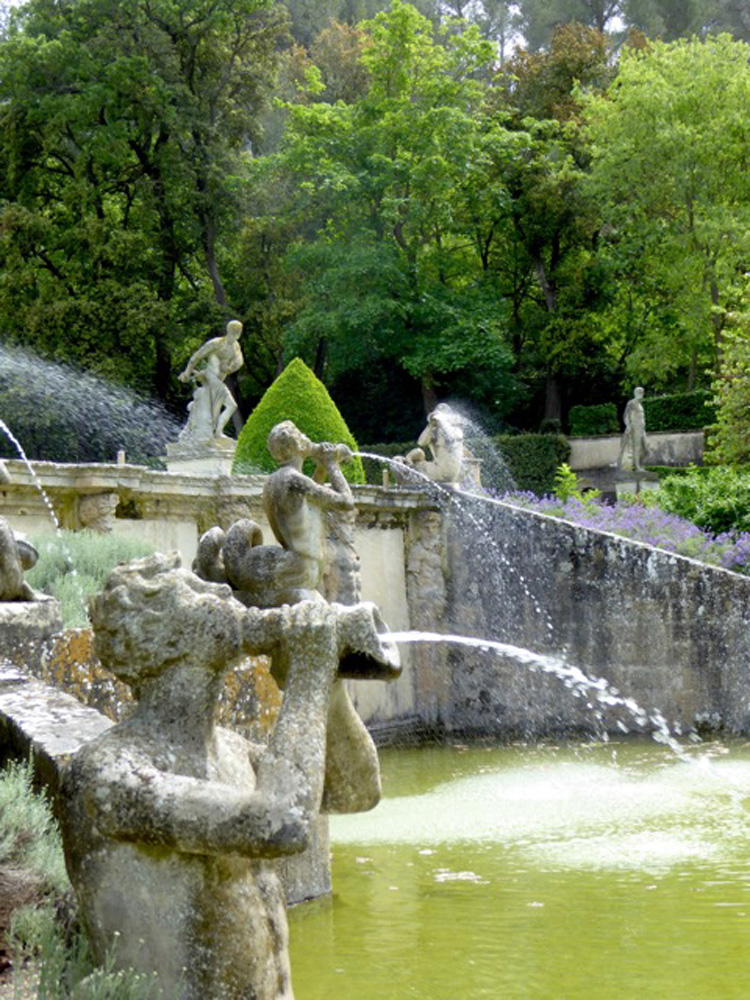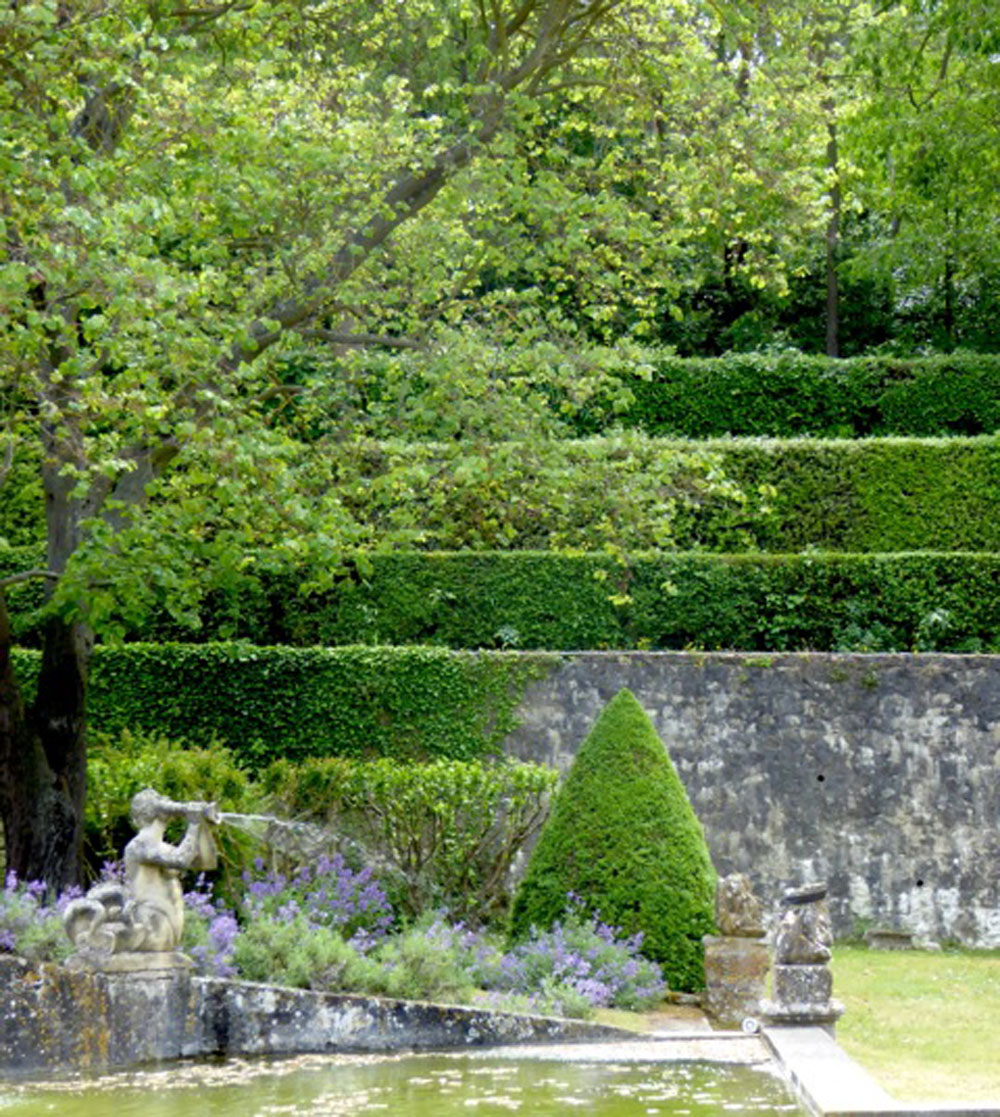May /mai 2017 – The Annual General Meeting 2017 and
International Conference ‘Art et Jardins’, Aix-en-Provence
Over two days, fifty participants from eight countries and three continents explored the theoretical and practical relationships between art and gardens. Set in the vibrant city of Aix-en-Provence, home town of Paul Cézanne, lectures from renowned speakers complemented visits to gardens in the surrounding area.
On the third day, members of Mediterranean Gardening France gathered at the Aquabella Hotel for the 2017 Annual General Meeting.
A vineyard where wine, art and architecture live in harmony
Oak woods and banks of wildflowers set the scene for our arrival at Chateau la Coste, the first of our series of visits to gardens near Aix-en-Provence.
One needs comfortable shoes and plenty of time to explore the smorgasbord of thought provoking installations at Chateau la Coste which describes itself as ‘a vineyard where wine, art and architecture live in harmony’. We walked for a couple of hours through the woods and vines to the sites selected by the twenty or so artists.
As there are so many of them, it is not possible here to reflect on all the varied structures installed by the artists. I appreciated Louise Bourgeois’ slightly malevolent ‘Crouching Spider’, and Frank Gehry’s dramatic Pavilion de Musique but at the same time, the gardener in me was looking for works with harmonious shapes which connected to the natural world around them.
The American artist Tom Shannon’s polished stainless steel ‘Drop’ is a perfect fit in the near and distant landscape. Appearing to float effortlessly on its plexiglass support, the flattened sphere is an arresting sight; a complete contrast to the surrounding countryside, but blending at the same time with the surrounding trees and with the ever-changing sky reflecting in the mirror-like surface. Is the beautiful and serene droplet also a statement about the consequences of climate change and our dwindling supplies of water?
‘Donegal’, the Irish artist Larry Neufeld’s two immaculate slate bridges interact beautifully with the landscape and each other by referencing the curve of the distant hill behind, while under the double arches the breeze bends the water reeds beneath into graceful curves. Man and nature in perfect harmony.
South Korean artist Lee Kufans’ ‘House of Air’ questions our perceptions of the natural and the man-made world. In front of the house, a large stone found nearby on the property sits in a forecourt of pale coloured gravel with a dark shadow. But is it a shadow? Darker coloured gravel defines what our eye perceives to be a shadow. And when the sun shines, a second shadow is another contrasting, moving element.
The gardener in me is alerted to the fact that this simple device, an object with an artificial shadow, could be easily adapted as a witty installation in our home gardens.
Inside the Temporary Exhibition Gallery, Chinese artist Ai Weiwei’s exuberant and ethereally beautiful installation, woven and stitched out of natural materials – cane, silk fabric and fine twine, was a powerful and challenging series of statements on the artist’s interpretation of creatures in Chinese and mythological texts. His favourite themes of politics, exploitation, and resistance are introduced and the information supplied helped to make sense of the meaning behind the exquisite shapes and shadows. It was a final note of magic which was the end of the beginning of our first ‘Art and Gardens’ experience.
Text and Photographs: Ruth Caple
The garden and bastide of Romégas
It was a wild and wet afternoon when we arrived at the 17th century bastide of Romégas and its garden. We were welcomed and told how the property had been restored over the last 40 years. The house lay down a very narrow lane with an even tighter entrance and driveway before the parking area on the old threshing floor, to the side of the buildings.
In front of the house was an impressive 18th century box parterre with a pool at its centre.
A narrow winding path led down through woods past a chapel, pools and an aviary. Eventually we emerged at the lower end of the gardens onto a wide grassy area that ran all the way back up to the house. With the woodland on one side and a scalloped border on the other, backed by cypress trees, the ensemble was very pleasing. Poppy fields bordered the garden. In nice weather, the vista over fields to the Mount Sainte-Victoire is said to be spectacular. Unfortunately, we will have to go back on another occasion to enjoy the view.
At the top of the garden there was a recently constructed kitchen garden surrounded by roses, with an orchard behind. Along the front of the house were some fine urns and at its side a stable block with a dove cote above.
It was a pity that the weather was so inclement but we still found it a lovely garden to visit.
Text and photographs: John and Jill Patterson
The sculpture garden of Max Sauze
In the village of Éguilles, near Aix-en-Provence, there is a garden belonging to the artist Max Sauze which was awarded the label ‘jardin remarquable’ by the Ministry of Culture in 2005. Our visit started when we stepped into Max’s art gallery and were warmly welcomed by his wife, Anne Sauze-Leberre. We were immediately intrigued by his highly imaginative work and the iconic lamps made of bent aluminium strips, lamps and steel wire. These lamps helped to establish Max’s reputation as an artist and master of design during the 1960s after he arrived in France from Algeria, where he was born.
Max Sauze moved to Éguilles in 1963 to a house with an abandoned vegetable plot surrounded by a few fruit trees, a large lime tree, a plane tree and a palm. Amongst these trees Max added others: black cedar, red thuya, blue cypress, cherry, olive and plum. Shrubs were planted including Philadelphus coronarius, Viburnum tinus, Pittosporum tenuifolium, Mahonia aquifolium and perennials such as Ballota pseudodictamnus, Euphorbia characias and Vinca minor. Over the years this area was lovingly transformed into a shady, intimate and natural setting for his sculptures.
For over 60 years Max has been conceiving, designing and creating all kinds of shapes in a multiplicity of materials including metal, paper, plastic, snail shells, stone and wood. He has a total mastery of these materials and draws inspiration from nature, working on the multiplication of form from a simple base. Walking through Max’s garden is like being in a tiny universe both intimate and poetic. It is a feast for the eyes, where sculptures blend in with their back ground and at every turn one is both intrigued and delighted.
Text and photographs: Tilly Chambers
Paul Cézanne at the Bibémus quarries
We were exceptionally well served with the weather for our trip to the Bibémus quarries – dry, warm but not too hot, and little wind. After a fascinating introduction to the life of Paul Cézanne, we were taken by coach up the narrow winding road to the entrance. The quarries had been in use since Roman times to provide stone for the buildings in the city, but were already disused when Cézanne, a great walker and fascinated by colours, decided to hire a small building there for his workshop. He would be taken there by horse and trap early each morning and work until the light was too intense, then begin again later in the afternoon. The views of Montagne Sainte Victoire, the colours of the stone and the vegetation all provided inspiration and figure in several of his paintings.
The quarries extend over seven hectares and from the edge there are expansive views over the plains at the foot of Montagne Sainte Victoire. The thick vegetation under the tall pine and evergreen oak trees is typical of the garrigue with alkaline soil and many interesting plants including Aphyllanthes monspeliensis, borage, Cistus albidus, Cistus salviifolius, Euphorbia serrata, Limodorum abortivum and Lonicera etrusca – to name a few.
We climbed down into the quarry and along a rough path and turning a corner saw the last thing we expected – a car! A Canadian sculptor is the only person authorised to live in the quarry, in a small building with no services. Walking further, we came to the building where Cézanne worked from 1895 to 1899, and panels with reproductions of some of his famous paintings were placed at the very spots where he must have placed his canvas.
Text and photos: David and Helen Mason
A walk from Bibémus to Le Tholonet
After the visit to the quarries at Bibémus the group found its way, along a serpentine hiking trail, to lunch in Le Tholonet, about 3 km to the south. The walk was first through a shady forest, then, emerging into bright sunshine, we stopped to look at the view of Montagne Sainte Victoire.
Our way continued, steeply downhill, on a path edged by banks of red soil and towering pin d’Alep trees (Pinus halepensis).
Here are some of the plants and trees we saw:
Text: Jennifer Hastings
Photographs: Kevan Kristjanson and Helen Mason
Les Jardins d’Albertas – a garden of surprises
Albertas, a beguiling 17th century pleasure garden, was built for a wealthy Aix-en-Provence family to take the country air with their friends. It sits to the south of the city, in Bouc-Bel-Air. The planned chateau was never built so this remains, unusually, a garden without a house.
The garden was created in three distinct terraces, incorporating Italian, French and English styles of design. Entering at the lower level the first surprise is the long canal, running pretty much the whole width of the garden, reflecting shadows of a row of magnificent plane trees.
Beyond a wide sweep of lawn is the impressive bassin, containing exuberant sculptural fountains with 17 jets including tritons blowing water, flanked by symmetrical curving steps, santolina and sage.
Clipped evergreen hedges and statuary interface with the vibrant theatricality of the water leading up to the more natural tree planting on the boundaries.
Above the water is a large area of mown turf with a small formal parterre – the French garden – although the original plan of 1751 indicates a more elaborate pattern of broderie de buis. The lawn is retained however, as a useful surface for plant stalls during the annual event of Les Journées des Plantes d’Albertas, which runs over three days each year at the end of May.
The highest terrace overlooking the whole garden is delineated by clipped pyramids of yew and a pair of stone sphinxes, welcoming the visitor into the more natural English garden where informal tree planting towers over a wildflower and longer grass carpet.
The current owner gave us a generous and delightful insight into the garden’s history from its 1650 creation up to the most recent renovation, the water engineering, a little foray into the romantic liaison between Casanova and ‘Henriette’ of the d’Albertas family and how it has now turned into a garden for all to enjoy.
Text and photographs: Anny Evason and Julia Fogg
![]()


